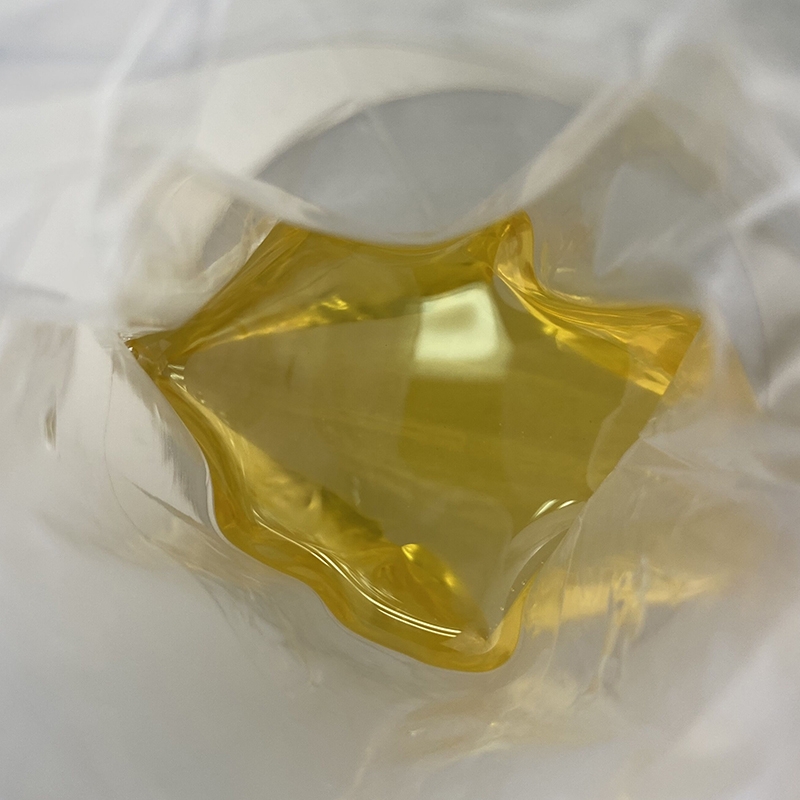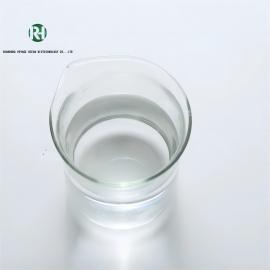-
Categories
-
Pharmaceutical Intermediates
-
Active Pharmaceutical Ingredients
-
Food Additives
- Industrial Coatings
- Agrochemicals
- Dyes and Pigments
- Surfactant
- Flavors and Fragrances
- Chemical Reagents
- Catalyst and Auxiliary
- Natural Products
- Inorganic Chemistry
-
Organic Chemistry
-
Biochemical Engineering
- Analytical Chemistry
- Cosmetic Ingredient
-
Pharmaceutical Intermediates
Promotion
ECHEMI Mall
Wholesale
Weekly Price
Exhibition
News
-
Trade Service
Some consumers think that "fresh milk" has the characteristics of "freshness" and "original ecology" and is a good drink
.
In fact, direct consumption of "raw milk" has nothing special in terms of nutrition.
On the contrary, there are health risks such as brucellosis
.
A few days ago, the State Food and Drug Administration organized relevant experts to interpret "fresh milk" in the 11th issue of "Food Safety Risk Analysis" in 2015
.
1.
"Raw milk" is no different from pre-packaged pure milk in terms of nutritional content and human health functions.
"Raw milk" is usually called raw milk (Raw Milk), which is a process that has not been sterilized and homogenized.
Common name for processed raw milk
.
At present, a small amount of "raw milk" is sold in bulk on the market, and consumers generally boil it for drinking after purchase
.
For the commercially available boxed, bagged and other pre-packaged pure milk, the "raw milk" is cooled, raw milk inspected, impurity removal, standardization, homogenization, and sterilization (pasteurization or ultra-high temperature sterilization).
The products made by other processes are products that meet the requirements of relevant national standards
.
Because it has not undergone homogenization process, the milk fat balls of "raw milk" are relatively large, and they will aggregate and float after boiling, which brings about the sensory impression of "sticky" and "strong flavor"
.
However, studies have shown that "raw milk" and pasteurized pure milk actually have no significant differences in nutrition and human health functions
.
2.
"Fresh milk" has potential safety hazards due to incomplete sterilization.
Consumers should not
recommend that pure milk has unique nutritional characteristics and is a very important food
.
However, due to its rich nutrition and other characteristics, pure milk is also a good medium for the growth and reproduction of microorganisms, and is extremely susceptible to contamination by animal bodies and microorganisms in the milking environment
.
The microbial contamination of "fresh milk" is mainly caused by Escherichia coli, Staphylococcus aureus, Pseudomonas, and fungi in the environment, as well as zoonotic diseases such as Brucella and Mycobacterium tuberculosis from animals.
Germs and so on
.
Therefore, if "raw milk" is not fully sterilized, it is easy to cause the spread of zoonotic diseases
.
For example, brucellosis is a zoonotic disease caused by Brucella.
Brucella is usually parasitic in cattle, sheep, dogs, pigs and other livestock closely related to humans.
Infected by the secretions of infected animals, or by eating contaminated meat or dairy products
.
Reports from the US Centers for Disease Control and Prevention and the United Nations Food and Agriculture Organization/World Health Organization pointed out that the risk of Brucella may come from unpasteurized dairy products and undercooked meat products
.
"Raw milk" has not undergone any disinfection treatment, and the information on whether the milk cows are healthy, whether they are quarantined, and whether they are contaminated during transportation is still difficult to be traced completely, and there are certain hidden food safety hazards
.
Especially children, the elderly, pregnant women and people with weakened immunity are at greater risk of being infected by pathogenic bacteria after eating "fresh milk"
.
There are reports of food poisoning caused by eating "raw milk" at home and abroad
.
Therefore, consumers are advised not to drink "raw milk" directly
.
3.
The "fresh milk" used in the production of dairy products has strict regulations and standards.
In order to strengthen the supervision and management of milk quality and safety, China has formulated and promulgated the "Regulations on the Supervision and Administration of Milk Quality and Safety" and relevant regulations and standards
.
The raw milk used in the production process of dairy products is "fresh milk".
When purchasing "fresh milk", dairy companies conduct conformity inspections in accordance with national standards.
Unqualified raw milk is not allowed to enter the production process
.
Natural and high-quality "raw milk" refers to the breasts produced from healthy animals.
The entire production process is operated according to specifications.
The final test results are low bacterial count, low somatic cell count, normal milk composition, no antibiotic residues, no sediment and odor , Natural milk without water
.
In order to ensure the quality and safety of "fresh milk", China, the United States, the European Union and other countries have established limit standards for microorganisms in fresh milk
.
According to China's "National Food Safety Standard Raw Milk" (GB 19301-2010), the total number of bacterial colonies in raw milk shall not exceed 2×10 6CFU/g(mL)
.
According to the "Summary of American Raw Milk Quality Management Practices" issued by the US Food and Drug Administration (FDA) in 2002, the total number of bacterial colonies cannot exceed 5×10 5 CFU/mL
.
The European Union's 92/46/EEC directive on the "Hygienic Rules for the Production and Sales of Raw Milk, Heat-treated Milk and Dairy Products" stipulates that the total number of colonies in raw milk is less than 1×10 5 CFU/mL
.
Therefore, experts suggest that the regulatory authorities should strengthen the supervision of fresh milk beverages that are made and sold on the spot to prevent the sale of unqualified “fresh milk”; dairy processing enterprises should strengthen the supervision of “fresh milk” during the purchase of “fresh milk”.
The quality of "milk" is inspected, comprehensively monitored, and no dead ends are left to ensure the quality and safety of the purchased "fresh milk"; consumers should raise their awareness and try not to drink unsterilized "fresh milk" directly
.
.
In fact, direct consumption of "raw milk" has nothing special in terms of nutrition.
On the contrary, there are health risks such as brucellosis
.
A few days ago, the State Food and Drug Administration organized relevant experts to interpret "fresh milk" in the 11th issue of "Food Safety Risk Analysis" in 2015
.
1.
"Raw milk" is no different from pre-packaged pure milk in terms of nutritional content and human health functions.
"Raw milk" is usually called raw milk (Raw Milk), which is a process that has not been sterilized and homogenized.
Common name for processed raw milk
.
At present, a small amount of "raw milk" is sold in bulk on the market, and consumers generally boil it for drinking after purchase
.
For the commercially available boxed, bagged and other pre-packaged pure milk, the "raw milk" is cooled, raw milk inspected, impurity removal, standardization, homogenization, and sterilization (pasteurization or ultra-high temperature sterilization).
The products made by other processes are products that meet the requirements of relevant national standards
.
Because it has not undergone homogenization process, the milk fat balls of "raw milk" are relatively large, and they will aggregate and float after boiling, which brings about the sensory impression of "sticky" and "strong flavor"
.
However, studies have shown that "raw milk" and pasteurized pure milk actually have no significant differences in nutrition and human health functions
.
2.
"Fresh milk" has potential safety hazards due to incomplete sterilization.
Consumers should not
recommend that pure milk has unique nutritional characteristics and is a very important food
.
However, due to its rich nutrition and other characteristics, pure milk is also a good medium for the growth and reproduction of microorganisms, and is extremely susceptible to contamination by animal bodies and microorganisms in the milking environment
.
The microbial contamination of "fresh milk" is mainly caused by Escherichia coli, Staphylococcus aureus, Pseudomonas, and fungi in the environment, as well as zoonotic diseases such as Brucella and Mycobacterium tuberculosis from animals.
Germs and so on
.
Therefore, if "raw milk" is not fully sterilized, it is easy to cause the spread of zoonotic diseases
.
For example, brucellosis is a zoonotic disease caused by Brucella.
Brucella is usually parasitic in cattle, sheep, dogs, pigs and other livestock closely related to humans.
Infected by the secretions of infected animals, or by eating contaminated meat or dairy products
.
Reports from the US Centers for Disease Control and Prevention and the United Nations Food and Agriculture Organization/World Health Organization pointed out that the risk of Brucella may come from unpasteurized dairy products and undercooked meat products
.
"Raw milk" has not undergone any disinfection treatment, and the information on whether the milk cows are healthy, whether they are quarantined, and whether they are contaminated during transportation is still difficult to be traced completely, and there are certain hidden food safety hazards
.
Especially children, the elderly, pregnant women and people with weakened immunity are at greater risk of being infected by pathogenic bacteria after eating "fresh milk"
.
There are reports of food poisoning caused by eating "raw milk" at home and abroad
.
Therefore, consumers are advised not to drink "raw milk" directly
.
3.
The "fresh milk" used in the production of dairy products has strict regulations and standards.
In order to strengthen the supervision and management of milk quality and safety, China has formulated and promulgated the "Regulations on the Supervision and Administration of Milk Quality and Safety" and relevant regulations and standards
.
The raw milk used in the production process of dairy products is "fresh milk".
When purchasing "fresh milk", dairy companies conduct conformity inspections in accordance with national standards.
Unqualified raw milk is not allowed to enter the production process
.
Natural and high-quality "raw milk" refers to the breasts produced from healthy animals.
The entire production process is operated according to specifications.
The final test results are low bacterial count, low somatic cell count, normal milk composition, no antibiotic residues, no sediment and odor , Natural milk without water
.
In order to ensure the quality and safety of "fresh milk", China, the United States, the European Union and other countries have established limit standards for microorganisms in fresh milk
.
According to China's "National Food Safety Standard Raw Milk" (GB 19301-2010), the total number of bacterial colonies in raw milk shall not exceed 2×10 6CFU/g(mL)
.
According to the "Summary of American Raw Milk Quality Management Practices" issued by the US Food and Drug Administration (FDA) in 2002, the total number of bacterial colonies cannot exceed 5×10 5 CFU/mL
.
The European Union's 92/46/EEC directive on the "Hygienic Rules for the Production and Sales of Raw Milk, Heat-treated Milk and Dairy Products" stipulates that the total number of colonies in raw milk is less than 1×10 5 CFU/mL
.
Therefore, experts suggest that the regulatory authorities should strengthen the supervision of fresh milk beverages that are made and sold on the spot to prevent the sale of unqualified “fresh milk”; dairy processing enterprises should strengthen the supervision of “fresh milk” during the purchase of “fresh milk”.
The quality of "milk" is inspected, comprehensively monitored, and no dead ends are left to ensure the quality and safety of the purchased "fresh milk"; consumers should raise their awareness and try not to drink unsterilized "fresh milk" directly
.







